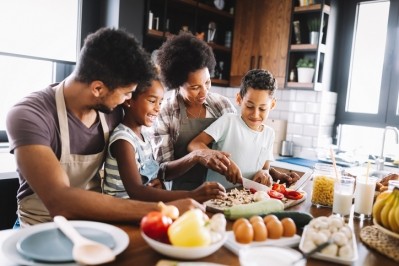Investing in the Future of Food
Selling DTC online doesn’t mean flying solo, partnerships helped Get Maine Lobster lift sales 435%
Among the most notable hurdles selling DTC online are driving discovery and brand building, which Mark Murrell explains he overcame when he founded Get Maine Lobster in 2009 by forging partnerships, some unexpected and others counterintuitive on the surface.
But, he explains in this episode of FoodNavigator-USA’s Investing in the Future of Food, maintaining this practice over the next decade and through the pandemic helped him drive 6X year-over-year growth and see a 425% increase in boxes and product shipped to more than 36,000 new consumers acquired in 2020 alone.
Among his most recent partnerships is one with Mastercard, which builds on the strong marketing outreach the Get Maine Lobster first secured through early arrangements with Groupon and Guilt.
“When you get an opportunity to work with somebody cool, wanting to do cool stuff with your product or service, then I think that should be an investment because don’t know what’s going to come out of that,” Murrell said, adding: “The practice of doing things a little bit out of the box and collaborating with others often inspires innovation, right? So, it’s almost like and R&D project, if you think about.”
Taking his own advice, Murrell recently partnered with MasterCard to create three experiences and commercials featuring Get Maine Lobster. He also is exploring a partnership with Food Lion and in the past partnered with Albertsons to offer retail grocery stores a better presentation of seafood.
Boldly, but humbly, ask for help
Most of the partnerships forged by Get Maine Lobster come from direct connections Murrell has through its network or that of his star-studded board, but even entrepreneurs without direct links can cultivate relationships by making bold requests humbly and offering something in return for others’ time and insights.
Murrell recommends leveraging connections on LinkedIn to be introduced to people who can help build a business or brand awareness. But he cautions that when doing this, entrepreneurs need to acknowledge the value of their request and therefore make it humbly and offer something in return for assistance.
For example, when Murrell wanted to learn more about the accessory company Pure Vida’s e-commerce experience, which he said he loves, he offered the CEO lobster in exchange for 30 minutes on the phone to learn about the development process.
When mistakes happen don’t just make it right – make it better
Along with the benefits of partnerships come risks – including failure to follow-through. When this happens, Murrell says entrepreneurs need to be transparent and right the wrong – even if it is expensive.
“We always make it right, even when we get it wrong. We’re very good at that because we do have mistakes, everybody does. So admit it and make it right, and oftentimes you could turn something negative into a positive,” Murrell said.
As an example, he pointed to a delayed shipment of beef wellington that hindered his ability to fill customer orders on time. In addition to apologizing, he offered them a more premium replacement and free beef wellingtons with their next order.
Listen to consumers
Get Maine Lobster also has been able to drive strong growth and sales online by actively listening to consumers.
Murrell says he regularly asks consumers – some of whom even have his direct cell phone number – what they want, and then he makes it happen, whether it be a chance to indulge without traveling, a special date made possible with easy-to-prepare meal kits, a fast dinner solution with ready-to-heat meals or flash frozen seafood with long shelf life for security.
“We’ve always been hyper-listeners. We’re always designing and curating. To give you an idea of the trust we have with our consumers, we launched a mystery box where we don’t even tell them what’s in it, and it’s probably one of our most popular campaigns,” Murrell said.
This strategy has paid off for Get Maine Lobster which has seen consumer ratings on its most popular collection increase to a 4.9 out of 5 customer rating score, and customer engagement on social media skyrocket with followers on Instagram growing from roughly 6,500 before the pandemic to more than 20,000, and followers on Facebook increasing from 30,000 before the coronavirus outbreak to 55,000.
Ultimately, as these numbers and Get Maine Lobster’s long-term success show, partnerships are the way to go – even when striking it out on your own with direct-to-consumer.
















